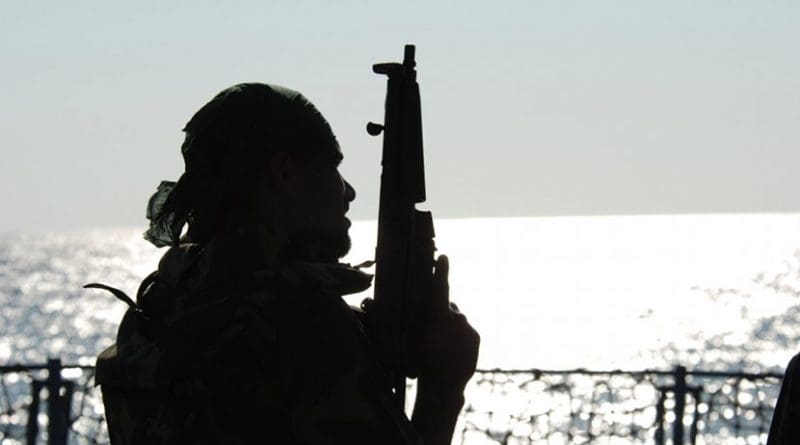Strengthening Sea Based Deterrence: Pakistan’s Quest For Strategic Equilibrium – OpEd
By Sher Bano
Pakistan’s Navy on December 8, 2021 conducted a successful live-fire test of SAMs “surface to air missiles” at Karachi port demonstrating its GBAD “Ground Based Air Defense”. It was a joint venture carried out by Pakistan’s navy and air defence unit, showcasing the armed forces combat readiness. Strengthening its sea based nuclear capabilities would allow Pakistan to counter India’s growing BMD “Ballistic Missile Defence” capability and other technological developments by Indian navy. The Pakistan’s pursuit to enhance its sea based deterrence is defined by concept of mutual vulnerability and is based on rational calculations. In the evolving maritime environment, if there is no effective nuclear deterrent at sea by Pakistan, the chances of conflict escalation and the probability of use of nuclear weapons would also increase.
As per the spokesperson of Pakistan’s Navy, the missiles successfully hit the target in the live-fire test. Admiral Muhmaad Amjad khan Niazi (The Chief of Naval Staff) was chief guest at the occasion. He was updated about the ongoing developments, operational capabilities’ of Pakistan navy and how the induction of SAMs would augment the security. The Chief of Naval Staff expressed his satisfaction over the operational readiness of the navy. He reassured that Pakistan navy is fully ready and prepared to prevent any nefarious strategy against the country. The Pakistan navy earlier also conducted “steel cutting” at Karachi shipyard in order to begin the work on fifth hanger class submarine that would be first of its kind to be indigenously built by Pakistan navy. This submarine is the part of agreement of eight submarines with China that have the capability to attack various targets simultaneously. In 2015, Pakistan bought eight submarines from China. Pakistan will manufacture four among the eight vessels and rest would be supplied by China. By next year the first submarine built by China is expected to be delivered, whereas the other four are expected to be built at Karachi by the year 2028.
Even though right now Pakistan does not have SSBN but these viable sea based deterrents would help it to maintain the strategic equilibrium and to stabilize its deterrence relationship vis-à-vis India. The naval nuclear deterrents have historically relied on submerged platforms because as compare to land based deterrents, they offer a fair degree of concealment. This advantage of reduced sea based deterrent vulnerability is critical in order to stabilize deterrence. It is also important to note that despite being significant platform in attaining second strike capability, nuclear weapon states do not pursue SSBNs as the first platform to achieve deterrence. The reason behind this is the technological and economic considerations. However with the increasing possibilities of pre-emptive strikes by India, Pakistan as next logical step needs to develop SSBN capability and attain credible sea based deterrent.
India is also rapidly increasing its ASW “Anti-Submarine Warfare” capabilities that might become a challenge for Pakistan’s sea based deterrent in future. In order to meet the futuristic requirements of Indian navy, it has been collaborating with the US. As a result of 2020 Indo-US deal on ASW, India had acquired MH60R Seahwak helicopters and DRDO has also been collaborating with India’s Defense Research to develop multiple AUVs “Autonomous Underwater Vehicles”. In the emerging maritime environment, this ASW operation might shift from being defensive mission to an offensive one in order to attain greater surveillance in sea. Even though yet there is no practical application of ASW offensive capability, if India decides to take this step, it might limit the operational mobility of Pakistan’s submarines endangering their survivability by targeting and locating the submarines on patrol. Hence this increasing vulnerability of the undersea forces might lead to crisis instability. These emerging trends might have implications for Pakistan and would force it to diversify its sea based and land deterrent forces. The possible offensive use of these systems that aim to enhance deterrence would worsen the crisis stability and would instigate arms race. Pakistan has responded to India’s growing counterforce capabilities by opting for diversifying its nuclear platforms instead of increasing its land based nuclear arsenal that would ensure greater survivability along with credible targeting options to counter Indian BMDs.
*The writer is working as a Research Affiliate at the Strategic Vision Institute (SVI), a non-partisan think-tank based out of Islamabad, Pakistan.

